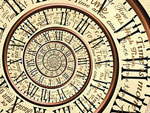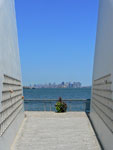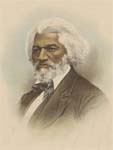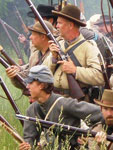Games Require Active, Skilled Teaching
Games are everywhere. Digital games have a long history of research and development in education. Yet despite this, there's still much confusion amongst the generation population, and even teachers. Are games good? Safe? A waste of time?
It's not hard to understand why there is still confusion. The field of games is vast—and therefore, confusing. Some games are aimed at skill-and-drill, some at learning specific facts, and others have been designed for deep learning—creating rich environments with dynamics that confront a student's conceptions and require complex decisions and collaboration with peers. Even some commercial games, not specifically designed for learning, fall into this last category. With such a complex landscape, it can be tricky for a teacher to know if and how to leverage games for learning, let alone which ones.
Well-designed digital games for learning provide learners with experiences that are built on principles confirmed by research in the learning sciences. The research in the field of educational games has shown that at the very least, well-designed games have the ability to dramatically increase engagement and motivation in students, as well as more critical skills like strategic thinking, problem-solving, and planning social skills such as communication and collaboration, and even personal skills such as initiative and persistence.
What does this really look like in the classroom? The MIT Education Arcade gives a nice overview of games in education, with examples and strategies for how teachers can begin using them (Editor's note: The author cowrote a white paper for the Arcade.). Their first vignette describes Ross, a middle school teacher who used the games Civilization and Diplomacy (commercial, off-the-shelf games) to explore the political causes of World War I. At a school that is not very big on technology, Ross found numerous benefits in using the game versus more traditional instructional methods, including teaching students skills in negotiation, how to problem-solve collaboratively, and how to be mindful of actions and impacts on others (systems thinking). Ultimately, Ross described the most beneficial aspect being that the game framed the context and content, providing a rich scenario with which the students could engage.
What's even more incredible is how Ross has described the advancement of his students' moral development through these learning experiences, as they forced students to negotiate and understand others' perspectives in order to achieve a mutually agreeable goal.
What this highlights is that games are often more than just a 1:1 exchange between the computer and the student. For many games, it's the dynamic created by the context of the game and the social interactions amongst learners and the teacher that are critical not only to the gaming experience, but more importantly, the learning experience.
While some argue that games can create learning experiences that bypass the teacher—and indeed, some games are designed for that—in general, games are not meant to replace or remove the teacher from the learning experience. In fact, the example of Ross and many others like it underscores the opposite—that games create scenarios in the classroom where the stakes are raised and the learning is deeper, thereby requiring highly skilled and engaged teachers facilitating the process.
This makes games used for learning history and the social sciences anything but fluff.
In reality, these games are some of the most robust learning vehicles, as they afford the opportunity to confront and tease out the complex historical and societal dynamics of our world, unlike many other disciplines, which can be parsed and truncated into short, discrete topics and smaller learning games.
Certainly, in general games can do many things that benefit learners, it's their intersection with history that is particularly unique (1):
- they allow students to explore four dimensions (both space and time) of worlds they would otherwise never get the chance to experience;
- they engage students' identities rather than asking them to gradually acquire facts and knowledge;
- they provide pathways into marginalized societies, creating a safe space to explore issues of race, power, and class; and
- they create historical simulations where students can create models and run cycles of inquiry with past events.
These opportunities make games in education worth paying attention to, but it's also worth noting their limitations as learning tools. For one, they are oversimplified, since a digital game can't represent reality absolutely. While simplification isn't inherently bad, as it lets you weed out the noise and focus on critical variables, it's important to help your students understand these limitations.
Secondly, students may grasp symbols and elements in the game but not always be able to transfer those symbols back to their real-world referents. Supplementing gameplay with other resources such as videos, primary documents, and case studies can assist with this.
In short, games matter in history education. Play is not a one-way flow of information—the player's actions matter. That play allows learners to embody the rhetorics, arguments, and actions of the past in code, so that they may be unpacked in the present.
Which game(s) are right for you and your students? A variety of good learning games are available for students of various ages, across the disciplines—many of them researched and developed by leading universities and institutions. Some more advanced commercial games that have been used in education include Civilization III, Rise of Nations, Pirates!, Gettysburg, Patrician, Age of Empires, 1602 AD, and Europa Universalis.
So while navigating the landscape of games to choose those that fit the needs of your students can feel like a game in and of itself, it's certainly not all fluff. If you want to see the effects of games in learning with your students, all you have to do is start playing.
1 For more information on this, see Kurt Squire's work.








